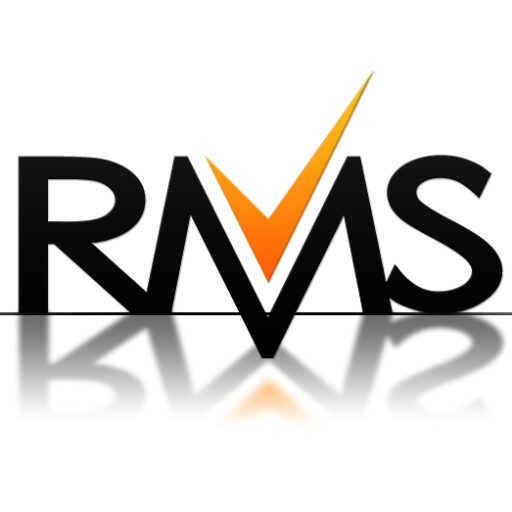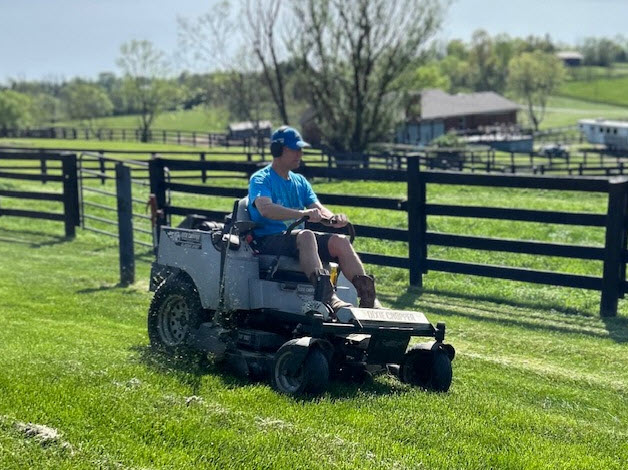In any field, success often hinges on continuous improvement through coaching and feedback. Whether you are an elite athlete, a talented singer, a seasoned business professional, or a dedicated collector, refining your skills based on input is paramount to consistently delivering excellence. In this blog, I aim to underscore the importance of prioritizing the customer and collector interaction for both collectors and managers within a collection organization.
Enhancing the Collector and Customer Interaction: Assessing Organizational Focus
As someone focused on the world of collection organizations and customer interactions, I have had the privilege of witnessing firsthand the diverse approaches taken to manage the collector and customer interaction. My definition of the customer and collector interaction is how the overall call flows and how a great interaction can lead to delivering both a strong financial (collection) and compliance results. From minimal oversight, where only a fraction of calls are reviewed or recorded, to comprehensive analytics and focused call monitoring, organizations vary widely in their commitment to optimizing this crucial aspect of their operations.
Where does your organization stand on this spectrum?
- Low Focus on the Customer and Collector Interaction
- Typical Focus on the Customer and Collector Interaction
- Highly Engaged Focus on the Customer and Collector Interaction

Low Focus on the Customer and Collector Interaction:
- Call recording is sporadic, covering only about 50% of interactions.
- Limited investment in collection and compliance leadership.
- Collectors’ express reluctance to review their own calls.
- Leadership lacks a clear vision of what constitutes an ideal customer and collector interaction.
- Infrequent team discussions about improving the customer interaction.
When I work with teams that might have initially overlooked the customer interaction, I always emphasize the power of making incremental changes. Starting with defining the expected customer interaction sets the groundwork for a positive shift. Aligning all team members with this vision increases the likelihood of a consistent and impactful approach, fostering a supportive environment where everyone can contribute to each other’s success.
Once the team has a clear understanding of the expected interaction and can consistently deliver, implementing tools like scorecards or other monitoring mechanisms becomes more effective. These tools not only evaluate performance but also provide first steps towards increased oversight.
For smaller teams with limited resources, I encourage allowing all team members to get involved. Allowing collection managers, compliance personnel, and collectors to review calls can be incredibly beneficial. It not only helps collectors grasp the expectations of customer interaction but also fosters a culture of continuous learning and improvement. Every small step forward brings us closer to delivering exceptional interactions for our customers and collectors alike.
Typical Focus on the Customer and Collector Interaction:
- All calls are recorded, but the emphasis may be on collection effectiveness or compliance, depending on who reviews them.
- A basic scorecard is used to track performance.
- Leadership sets a standardized expectation for interactions.
- Feedback is provided for calls that fall short of expectations or have compliance issues.
When I work with teams that already have established call requirements and scorecards, it is an opportunity to fine-tune and elevate their processes even further. I approach it as a calibration exercise, where we align on how calls are reviewed and what standards are set for the collector and customer interaction. By reviewing calls scored by the team against my vision of a collector scorecard, we can ensure consistency and identify areas for improvement.
In some cases, organizations may focus heavily on compliance, but perhaps overlook the effectiveness of the collection call. I have encountered situations where calls were scored 100% yet lacked effort in finding payment solutions. It is crucial to strike a balance between compliance and collection effectiveness in these interactions. By incorporating both aspects into scorecards and reporting tools, we can enhance the quality of collection calls.
I highly recommend conducting coaching sessions monthly with every collector. This not only keeps them engaged but also provides consistent feedback on their interactions with customers. It is all about fostering a culture of continuous improvement.
One effective practice I advocate for is having the collector join in during call reviews. This collaborative approach allows them to provide insights and opinions based on their firsthand interaction of the call. Over time, it strengthens their understanding of the expected customer and collector interaction.
And here is a valuable tip: let the collector choose the call recordings for review.
This ensures a balanced perspective, and it encourages trust and transparency within the team. Remember, it is all about empowering collectors to strive for excellence and continuously challenge themselves to improve.
Highly Engaged Focus on the Customer and Collector Interaction:
- Calls are recorded and analyzed using voice analytics 100% of the time.
- Dedicated teams meticulously evaluate calls and analyze exceptions/transcripts.
- Both collection effectiveness and compliance are rigorously assessed.
- Robust reporting tools track trends and provide comprehensive feedback to collectors and managers.
- Leadership has defined a clear model for ideal interactions.
- Collectors receive regular feedback and engage in personal call reviews with managers.
- Call calibration sessions ensure alignment between collection and compliance teams.
When I work with teams that I believe have a strong grasp on overseeing the customer and collector interaction, it is truly inspiring to see their dedication and pride in what they do. I have had the privilege of engaging with individuals who are passionate about showcasing how they evaluate, coach, and track these interactions.
Many of these teams utilize a combination of voice analytics and call monitoring to assess the interaction. While voice analytics is invaluable for compliance-related aspects and identifying key triggers, I firmly believe that a trained eye is essential to comprehensively understand the entire interaction, from start to finish. Teams often attempt to use voice analytics to score the overall call, but it may not capture the nuances of how effectively the collector navigated the customer’s financial situation.
Similar to my previous recommendation, I love to challenge teams to involve collectors in call review sessions and allow them to choose which calls are reviewed. Collectors possess remarkable skills and giving them the opportunity to actively participate in business activities can greatly enhance their work interaction.
Additionally, these teams typically have robust reporting mechanisms in place, facilitating trend analysis at both individual and team levels. Reporting is instrumental in tracking coaching and feedback efforts, ensuring that managers, compliance personnel, and collectors all meet their required expectations with call monitoring. It is truly remarkable to witness the collaborative efforts of these teams and the positive impact they make on the customer and collector interaction.
By understanding where your organization falls within this framework, you can identify opportunities for improvement and ensure that every collector-customer interaction reflects your commitment to excellence.

Where Should I Focus to Improve My Awareness
Improving your awareness of customer and collector interactions does not happen overnight. It requires the right resources and time. You need people who can assess calls or reports and then use that information to coach collectors or tweak procedures. There are plenty of ways to gauge how your customers and collectors are interacting.
Based on my interaction working with collection organizations, I have found some effective strategies. They have really helped boost awareness of how customers and collectors interact, leading to better performance and smoother operations.
Exploring Effective Strategies: Insights from Working with Collection Organizations
Establishing Responsibility for Call Evaluation and Coaching:
Identify individuals, ideally in compliance roles, who will be responsible for evaluating collector calls, creating scorecards, and providing coaching. Allow collection managers to listen to call recordings and live calls as coaching tools to help each collector on the team improve. Consider involving collectors in call evaluations to distribute responsibility and ensure they understand evaluation criteria.
Addressing Technology Limitations:
In the absence of call recording technology or voice analytics, conduct side-by-side call observations using dual headsets to hear both sides of the interaction. Ensure compliance with state-level call monitoring laws. Alternatively, integrate collection compliance and reporting into scorecards to compensate for the lack of technology.
Defining the Desired Customer and Collector Interaction:
Clearly define the desired customer and collector interaction, focusing on building relationships, understanding the customer’s financial situation, matching payment solutions, and processing all commitments or setting follow up interactions to continue resolution.
Developing Comprehensive Scorecards and Reporting:
Develop call monitoring scorecards that encompass customer interaction (BUMP), collector effectiveness, and collection compliance. Ensure that expectations regarding call monitoring completion and participation in coaching sessions are clearly communicated.
Incorporating Monitoring Results into Performance Evaluation:
Integrate call monitoring results into the performance evaluation process for collectors, emphasizing the importance of continuous improvement.
Efficient Coaching Strategies for Managers:
If managers face time constraints for reviewing calls and coaching collectors individually, consider reviewing calls together with collectors during coaching sessions. This approach saves time, allows collectors to choose recordings for review, and avoids the perception that only problematic calls are scrutinized.
Group Call Calibration Sessions:
Organize group call calibration sessions involving both collection and compliance teams to evaluate calls collectively. This ensures alignment on what constitutes an optimal customer and collector interaction, enhancing the overall effectiveness of monitoring efforts.

Summary
In wrapping up, fostering a culture of continuous improvement in customer and collector interactions is key to success in any collection organization. Whether your team is just starting to prioritize these interactions or already excels in oversight, there’s always room to grow and enhance effectiveness. By implementing practical strategies, fostering collaboration among team members, and leveraging technology and feedback mechanisms, we can strive towards delivering exceptional interactions for both customers and collectors alike. Remember, every small step forward contributes to a stronger, more impactful organization. Let us continue to prioritize excellence and make a positive difference in the lives of those we serve.

Author: Ken Evancic
Ken.Evancic@ResourceManagement.com
Ken Evancic is a Vice President at Resource Management Services, Inc. Ken Evancic is a collections veteran with over 25 years experience. He has managed all phases of collection, including all levels of delinquency, automated dialer units, early out agency management, recovery, and skip tracing. In addition to collections operations management, he has lead initiatives in the areas of performance management, collections strategy development, collector and manager training, collector desktop design, collections reporting systems, and risk and compliance.
As a consultant for Resource Management Services, Inc., Ken has specialized in developing and completing third party compliance and performance audits for collections agencies and collection attorney firms for many top credit grantors and debt buyers. He has leveraged his 25 years of experience to develop multiple collector and collection management training classes designed to maximize collector performance. In addition to collection training, Ken helped develop and facilitates the RMS Third Party Vendor Auditing training.




